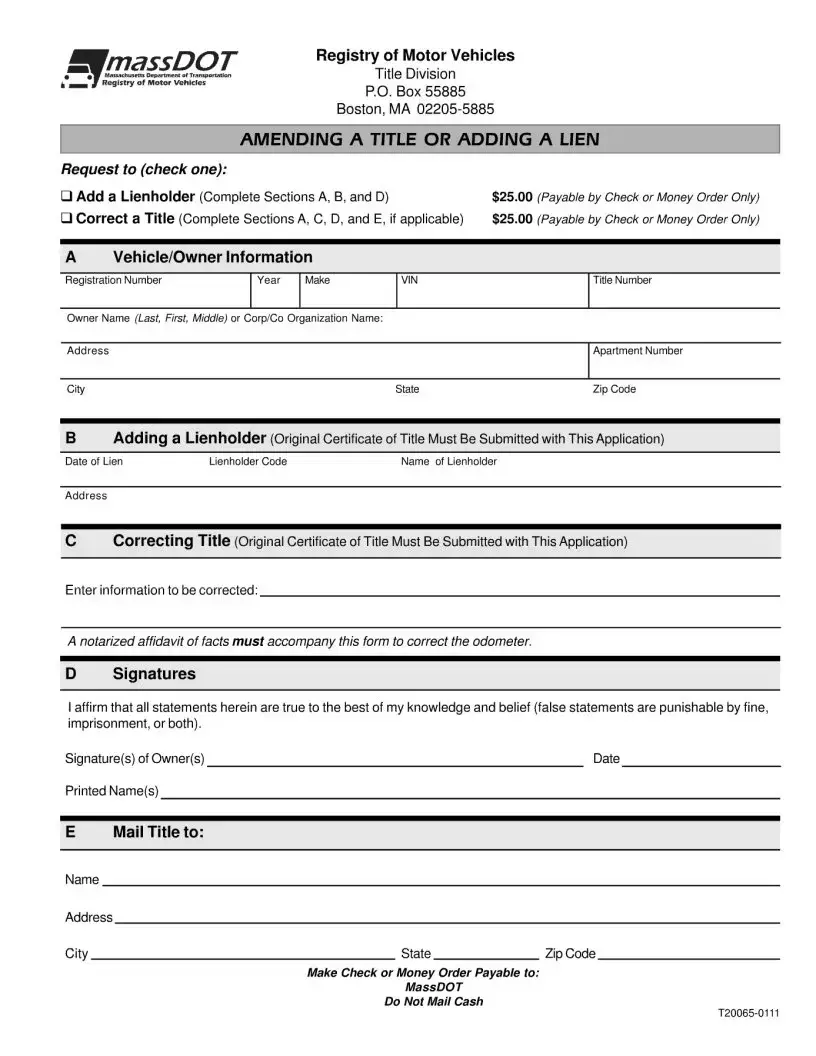What is a Massachusetts Lien Form?
A Massachusetts Lien Form is a legal document used in the state of Massachusetts to establish a lien. A lien is a legal right or interest that a creditor has in the debtor's property, granted until a debt or loan that the debtor owes the creditor is paid off. This form is typically used by contractors, subcontractors, or suppliers to secure payment for work performed or materials provided on a property.
Who needs to file a Massachusetts Lien Form?
Contractors, subcontractors, laborers, and suppliers who have not received payment for services rendered or materials supplied for a construction project in Massachusetts may need to file a lien form. Filing this form is important for securing their legal right to receive payment.
When should the Massachusetts Lien Form be filed?
The Massachusetts Lien Form must be filed within a specific timeframe to be valid. Generally, the lien must be recorded at the county registry of deeds within 90 days after the claimant last provided labor or materials. It's crucial to adhere to this deadline to maintain lien rights.
Where can I file the Massachusetts Lien Form?
The form must be filed in the registry of deeds in the Massachusetts county where the property is located. Each county's registry may have its own requirements and fees for filing, so it's advisable to contact the specific registry office or check its website for detailed instructions.
What information is required to complete the Massachusetts Lien Form?
To complete the form, you will need detailed information about the project, such as the property owner's name, the address of the property, a description of the work done or materials provided, the contract amount, and the amount remaining unpaid. Accurate and complete information is crucial for the lien to be valid.
Is legal assistance required to file a Massachusetts Lien Form?
While it's not mandatory to have legal assistance to file a lien, consulting with an attorney experienced in Massachusetts construction law can help ensure that the form is completed correctly and filed within the legal timeframe. An attorney can also provide guidance on the necessary steps to enforce the lien if payment is not received.
What happens after the Massachusetts Lien Form is filed?
Once the lien form is filed, it becomes a matter of public record. The property owner is notified of the lien, and it may affect their ability to sell or refinance the property until the debt is settled. To remove the lien, the debtor must pay the outstanding amount, or the claimant can enforce the lien through a legal process, potentially leading to foreclosure on the property.
Can a Massachusetts Lien Form be contested?
Yes, a Massachusetts Lien Form can be contested by the property owner or other interested parties. They may challenge the validity of the lien, the amount claimed, or the timeliness of the filing. If contested, the matter may need to be resolved through negotiation or litigation, emphasizing the importance of filing accurate and timely liens.
